When we decided on our trip to Germany last February, two main issues motivated us (apart from having a beautiful holiday in the north). One was seeing the Wagner again and comparing it with the one we made.
The other was seeing live the instruments we will focus on in this newsletter and speaking to people to understand what they were.
In Markneukirchen, they have these two instruments with these features: five strings, 8 cm of ribs, closely around 40 cm of string length (same as the Wagner).
The first, made by Johann Georg Hammig in 1747, entered the museum in 1904 as “viola pomposa, an instrument invented by J. S. Bach”. It was later catalogued as viola da gamba, viola Alta, violin. And it appeared in a post stamp in 1977 as a five strings Diskant Gambe.
I already reported earlier about this instrument, and François Fernandez kindly warned me against playing in da spalla position an instrument with a flat back because you stop the vibrations of the back, and it becomes muted. He tried, and I totally trust his words and experience.
I was mesmerised to find this instrument wearing signs of da spalla playing, as shown in the video above. It was not in playing condition. I don’t have clear ideas, but it intrigues me so much that I wish to make one… not sure yet, but thinking about it.
The second instrument was made in Danzig in 1742 by Johann Gollberg (also spelt Goltberg or Goldberg, father of J. S. Bach’s friend whom the Goldberg Variations are dedicated to). It entered the museum in 1884 as a Diskantgambe. It has a carved back, flames sound holes, and purfling decorations (inked) typical of the production of the makers coming from Vogland in that period.
I think that also this instrument has wear signs da spalla playing position, even if less marked than the previous one. The varnish is worn on the lower part of the back, the ribs are worn out where the chin and the right arm would rest, and there is some dirt in the contact place with the shoulder that couldn’t have gone there in other ways.
We’d love to know more about these instruments, with features and measures that do not perfectly fit under any specific terminology. All were made in the German area in the latest years of J. S. Bach’s life. High ribs, short string length, five strings. If someone has ideas or knows other instruments alike, please get in touch with us!
Updates from our workshop
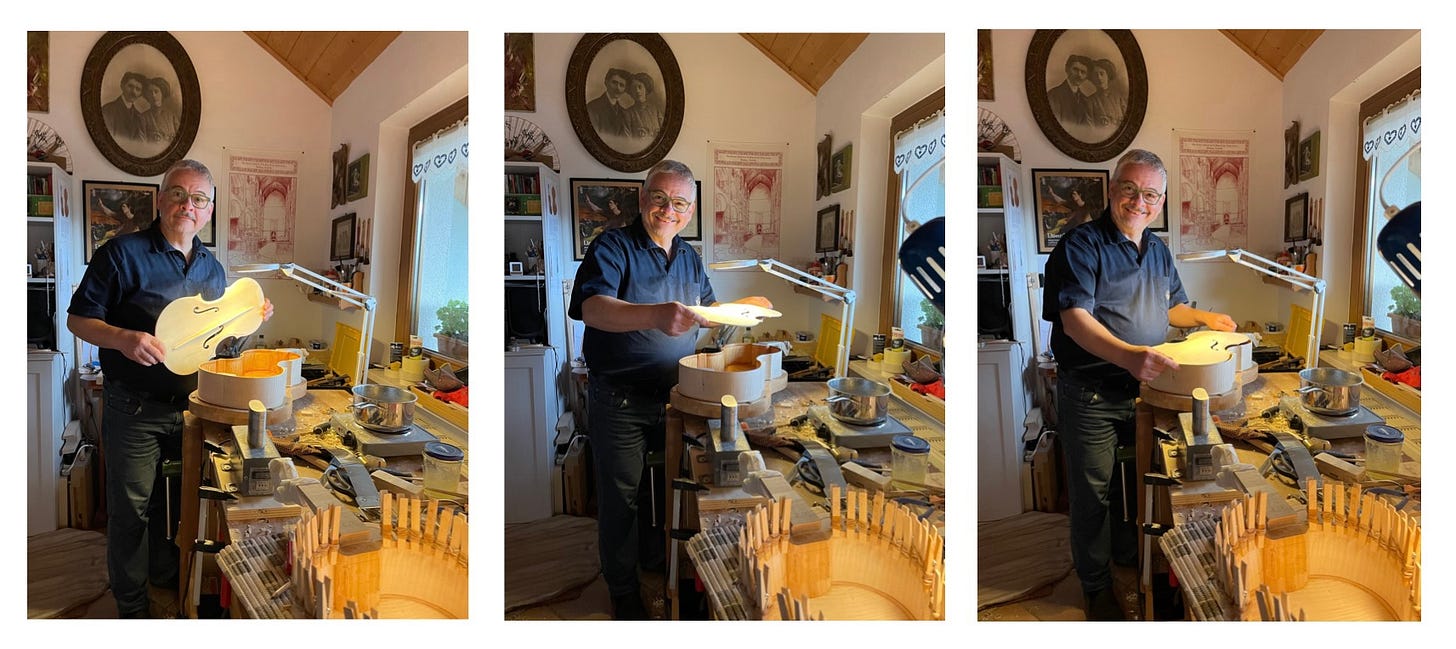
Featured video of the week
Speaking of experiments and de-standardization, this comes across in our YouTube feed. I think the sound has some effects, but anyway, just another way to solve the same issue!


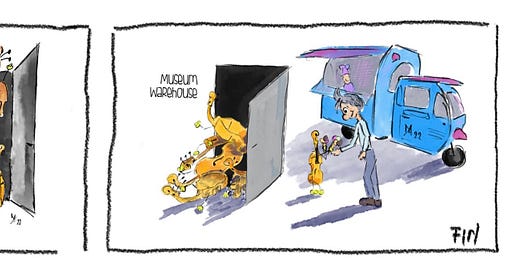



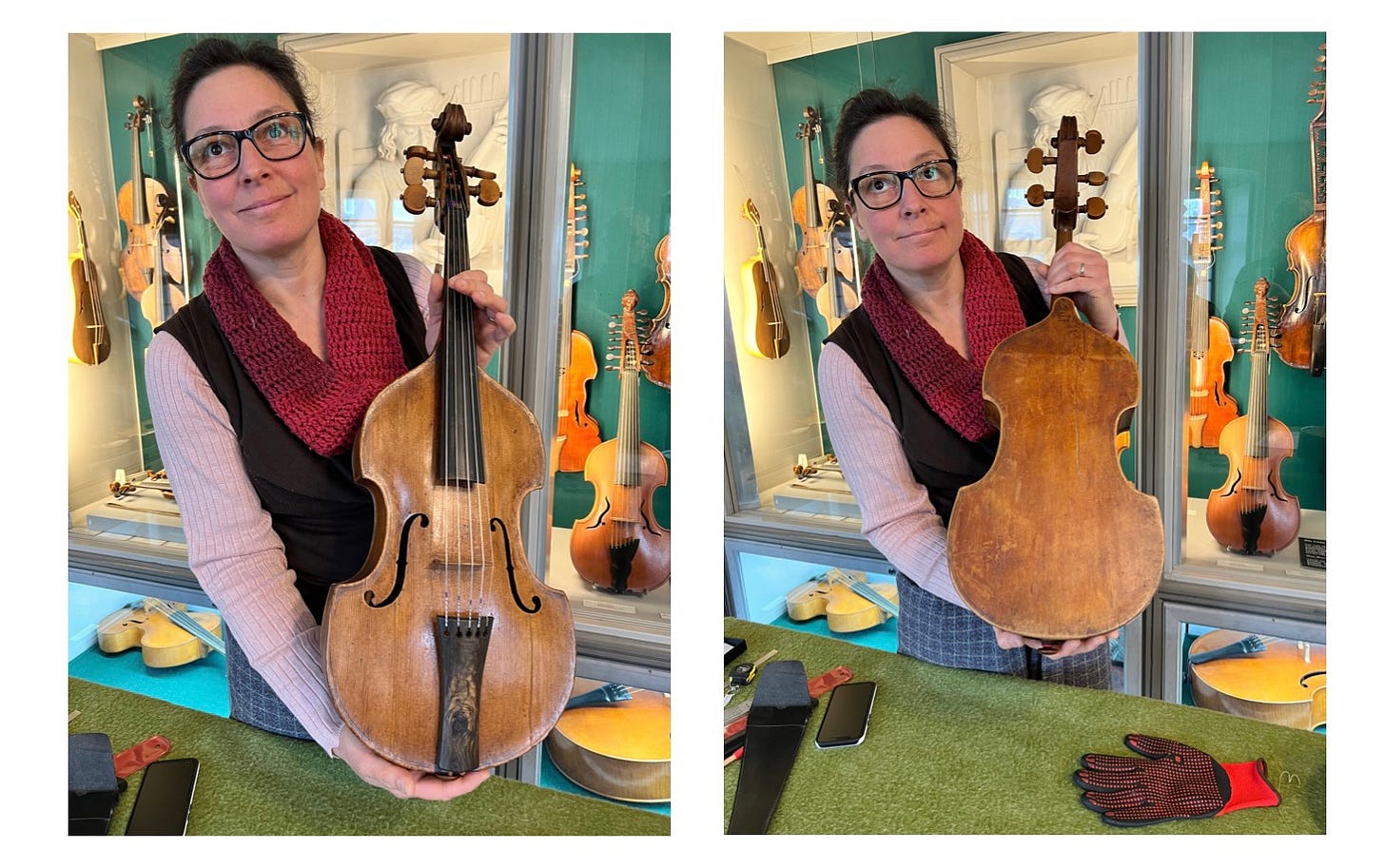
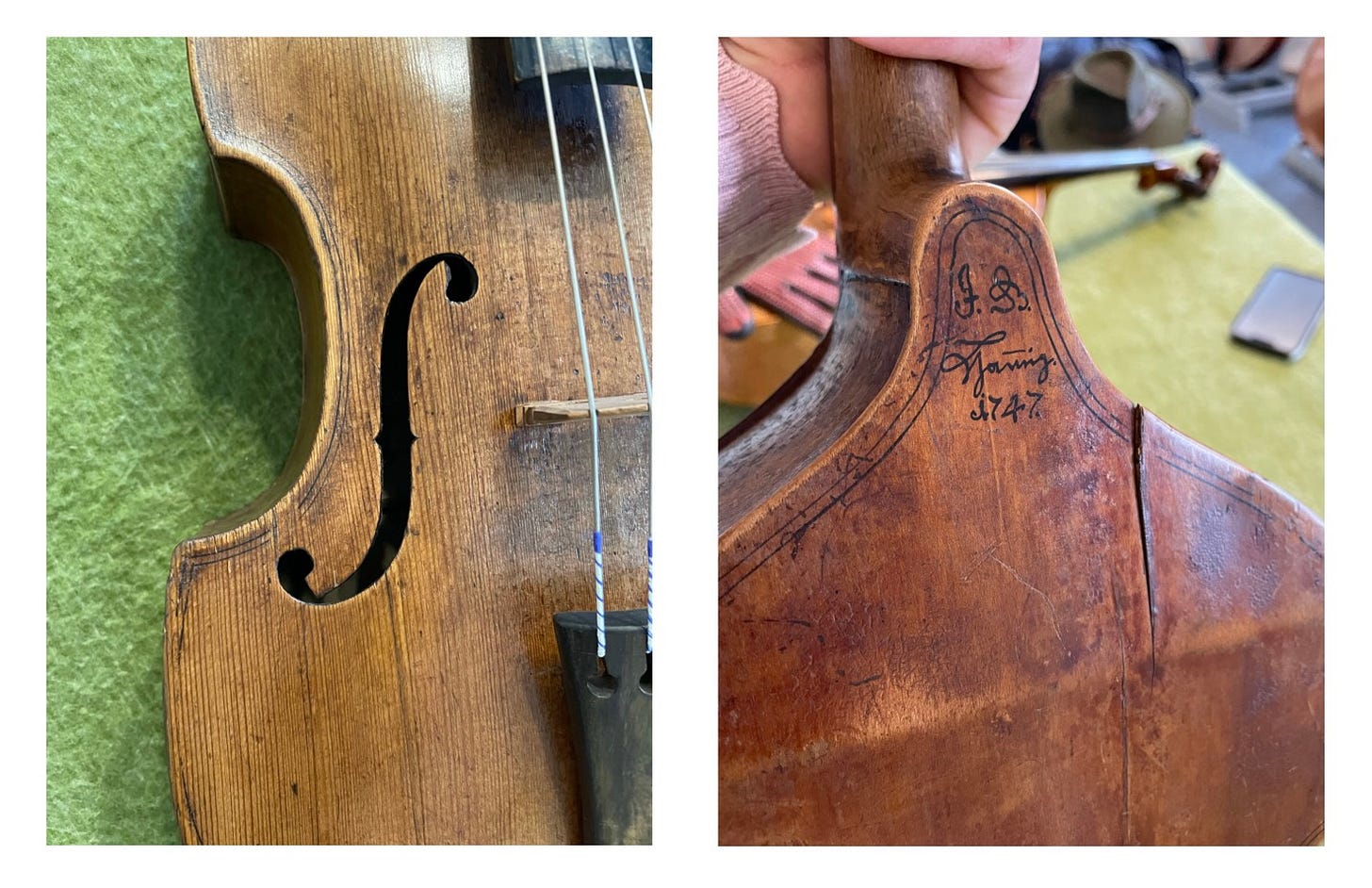
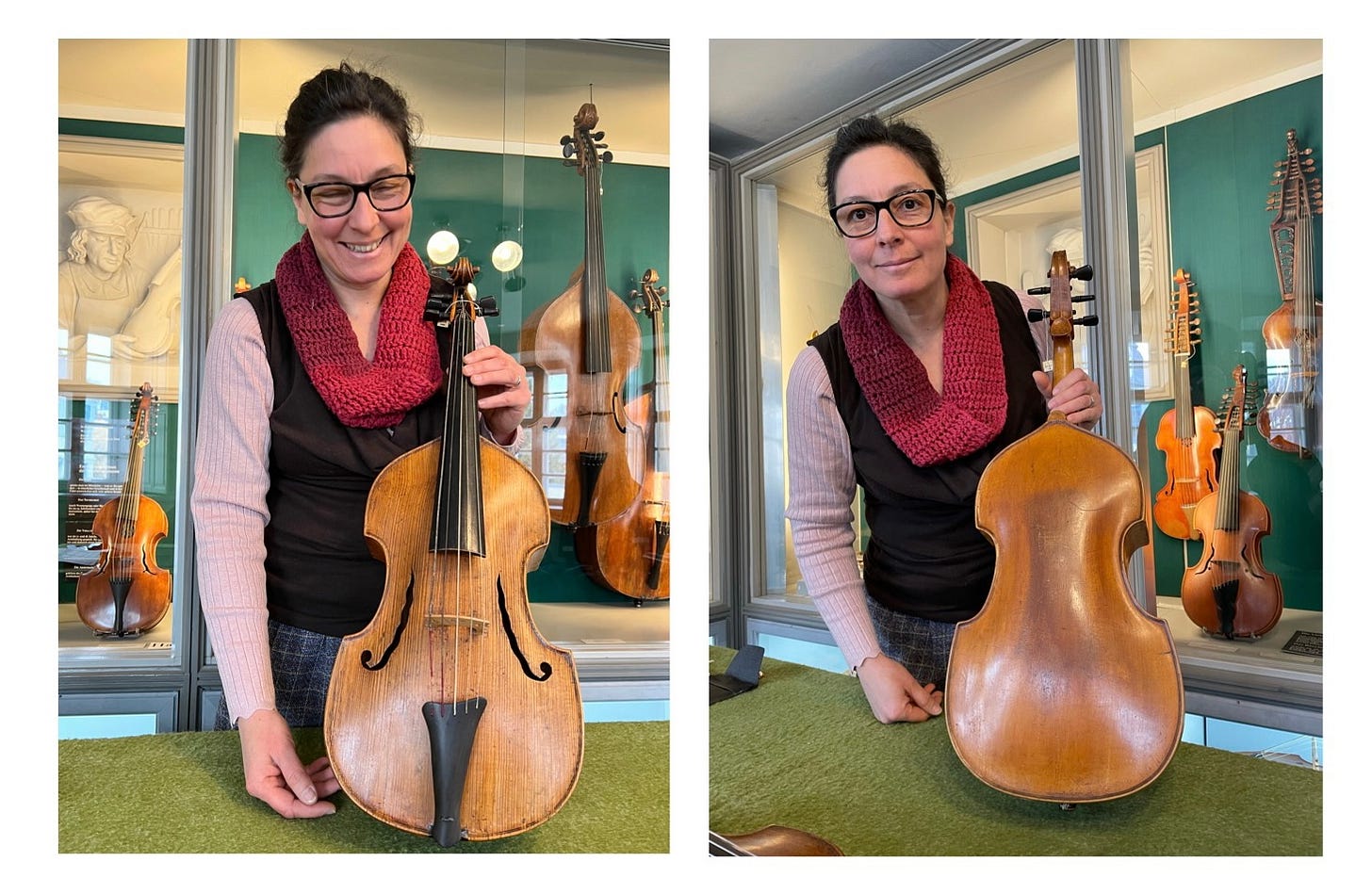
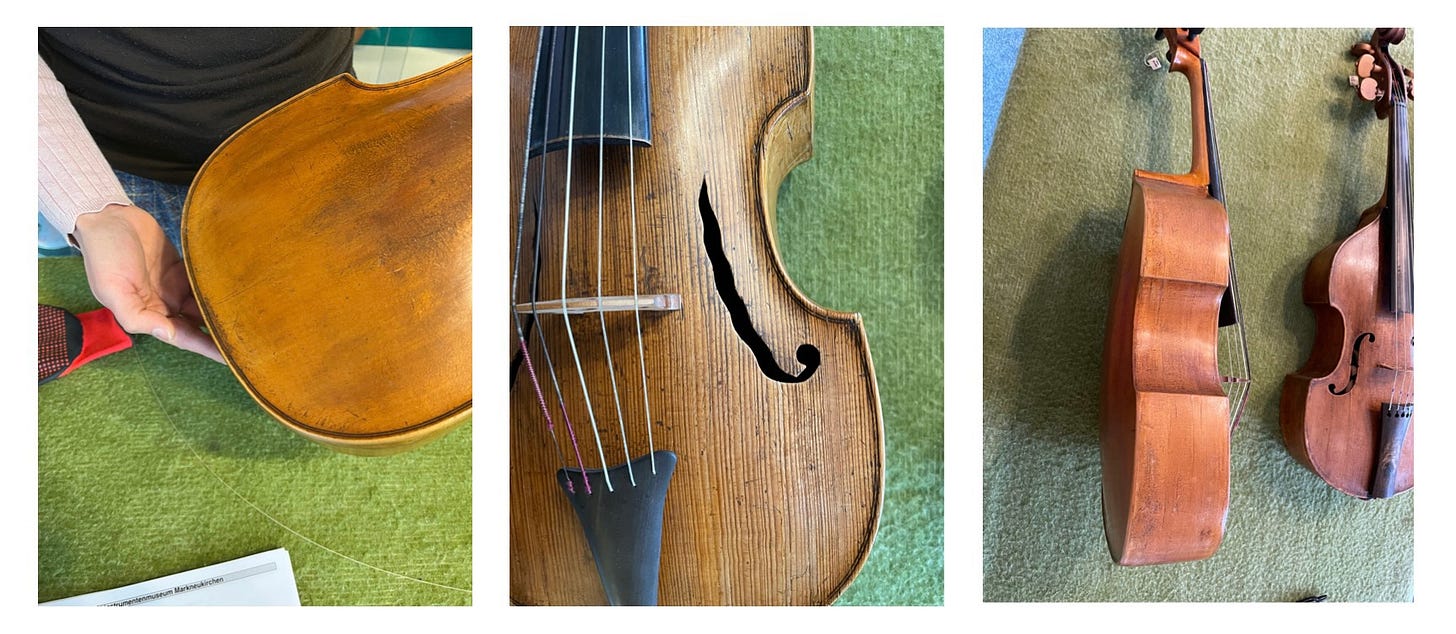



Share this post